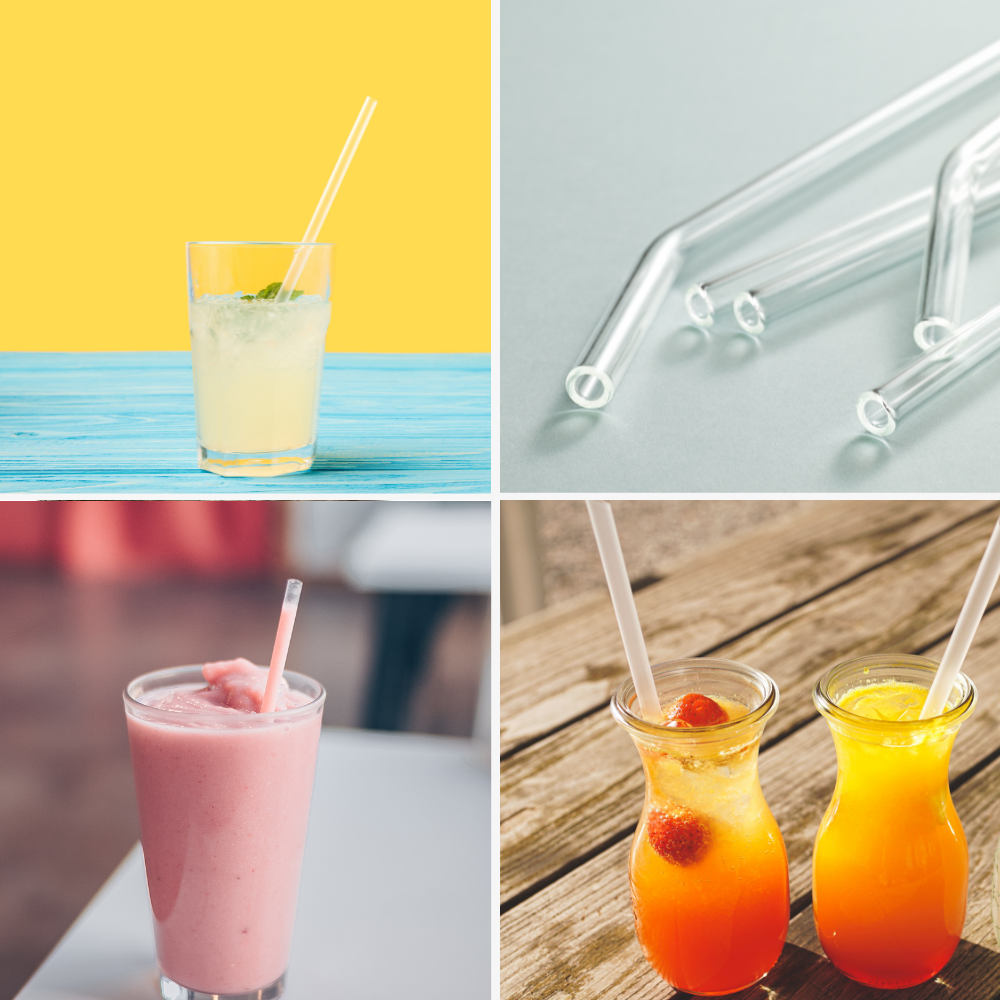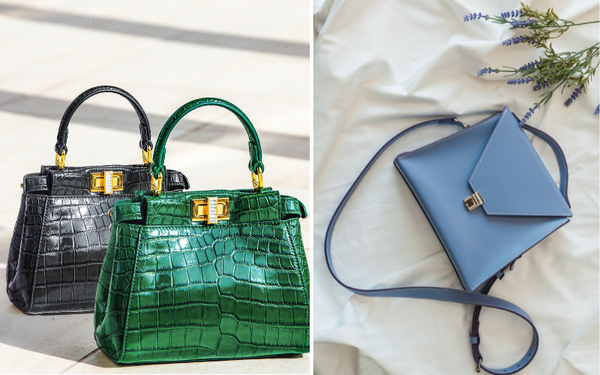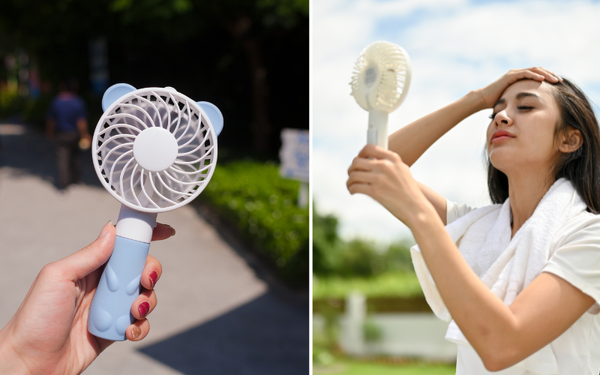Considering “what are the disadvantages of glass straws” as your next eco-friendly purchase? It’s important to be aware of their potential downsides. Glass straws can break easily, are heavier than their plastic or metal counterparts, and pose safety hazards if mishandled. In this article, we will delve into these disadvantages of glass straws, compare them to other materials, and help you decide if they’re the right choice for you.
Key Takeaways
- Glass straws are eco-friendly but fragile, less portable due to their weight, and come with a risk of breakage that could lead to injury.
- When compared to metal, bamboo, and silicone, each type of straw has unique benefits and drawbacks, with glass straws being heat resistant and stylish, metal strong yet conductive, bamboo eco-friendly but high-maintenance, and silicone flexible but less eco-friendly.
- Maintaining glass straws is fairly easy as they can be washed in dishwashers or by hand, and their transparency allows for better hygiene control, but care must be taken to avoid damage and ensure safety.
The Downside of Glass Straws
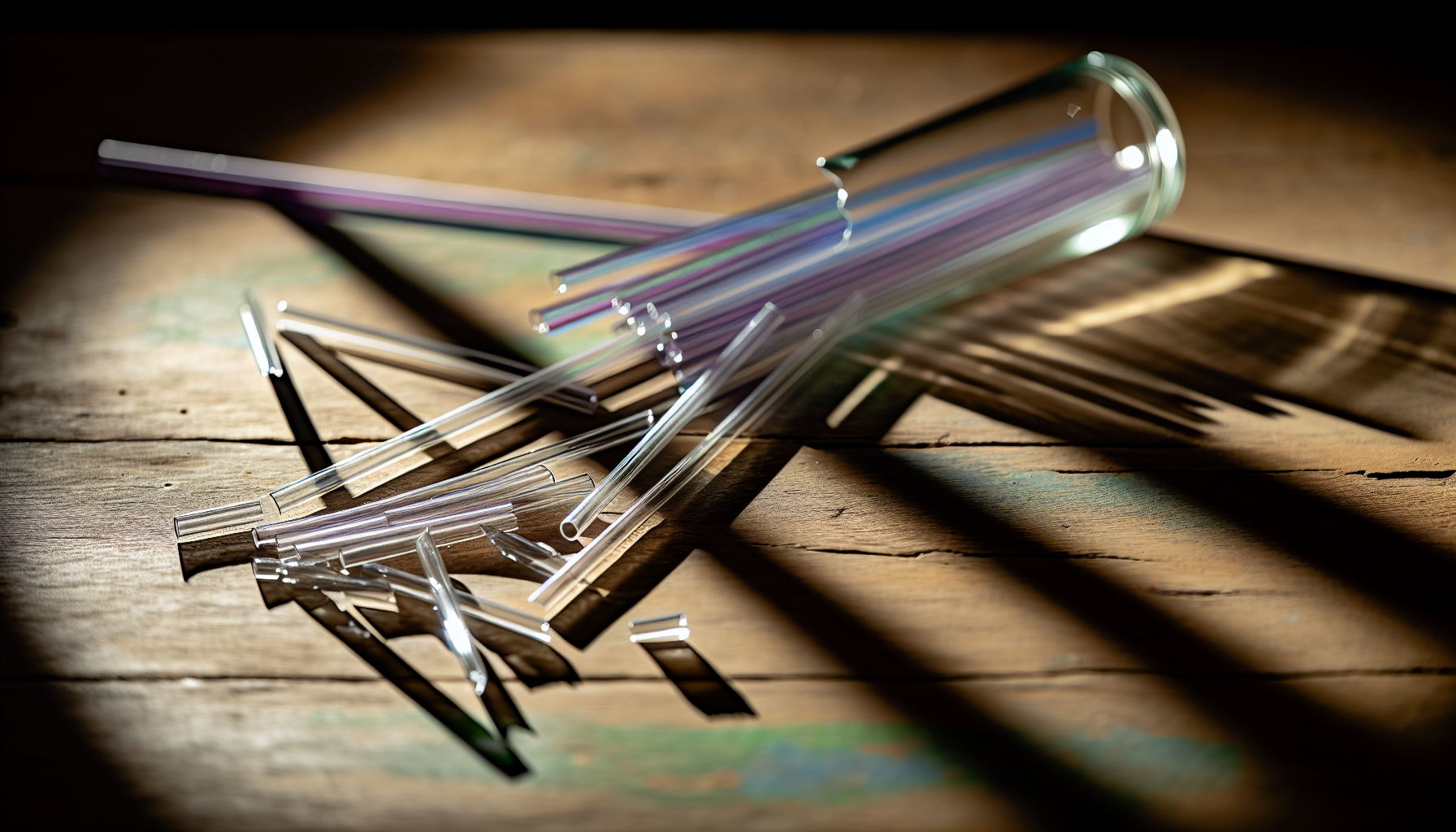
Glass straws, though a commendable alternative to single-use plastic straws, do present some challenges. Glass, as a material, is inherently delicate and can be less durable compared to other materials like stainless steel or silicone. Plus, they tend to be heavier, making them not as portable as their plastic or metal counterparts.
However, the most significant concern with glass straws is their safety. The risk of breakage and subsequent injury is a valid concern for any glass product, and straws are no exception. However, these disadvantages shouldn’t discourage you from contemplating the use of glass straws. With a little bit of care and caution, they can be a safe, eco-friendly alternative to single-use plastics.
Fragility and Breakage
Delicate by nature, glass straws can easily break if they’re dropped or handled roughly, unlike paper straws which are more flexible. Rest assured, there are measures to mitigate this. Simple precautions such as using a dishwasher, storing them in holders, or using rubber stoppers for insulation and protection can all help keep your straws intact.
Although fragile, glass straws, when properly managed, can outlast their single-use plastic equivalents, enduring for over two years. So, while they require a little extra care, they can be a durable and cost-effective choice in the long run.
Weight and Portability
Glass straws, while aesthetically pleasing, can be a little heavy. This makes them less portable than other reusable options like metal, bamboo, or silicone. But, just because they’re less portable doesn’t mean they’re not travel-friendly.
Innovations in design, like the compact and folding HeykirHome 4-Pack Reusable Glass Straw, make them easier to carry around. These straws come with a travel case, so you can sip sustainably, wherever you go. Moreover, using a cloth pouch or a hard case can keep your straws safe and prevent breakages during transport.
Safety Concerns
Safety is a significant consideration when using glass straws. The prospect of a straw breaking and causing injuries is a legitimate concern. If a glass straw breaks, it could lead to dental injuries if you accidentally bite it.
Swallowing a piece of glass from a broken straw, while unlikely, could lead to health complications such as chest pain and coughing. It’s always important to inspect your glass straw before use and discard it if you notice any cracks or chips.
Comparing Glass Straws to Other Reusable Alternatives
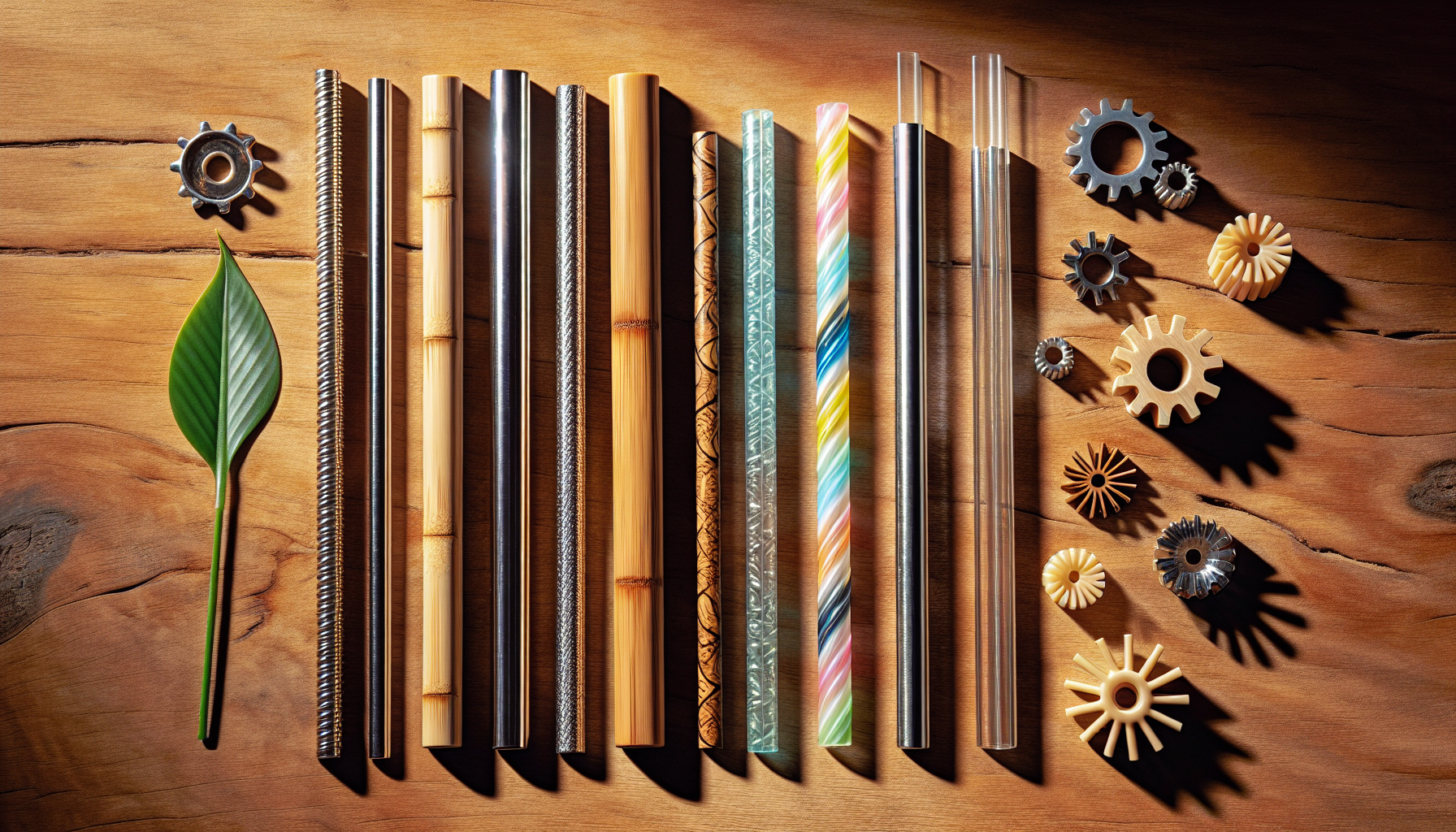
Despite the disadvantages of glass straws, it’s worth considering how they compare to other reusable options. Let’s compare them with metal, bamboo, and silicone straws, the other popular contenders in the reusable straw market.
Each material has its unique set of pros and cons. Here are some examples:
- Glass straws: heat resistant and stylish
- Metal straws: lightweight and strong
- Bamboo straws: eco-friendly but tricky to clean
- Silicone straws: flexible but potentially non-biodegradable
Metal Straws
Metal straws, usually crafted from stainless steel, are a popular choice among reusable straw enthusiasts. They are incredibly durable and easy to clean, making them a great alternative to disposable plastic straws. In addition to metal straws, reusable drinking straws such as metal and glass straws, as well as reusable plastic straws, are also gaining popularity as plastic straw alternatives, compared to the single-use plastic straw.
Yet, they do have a couple of disadvantages. Metal straws conduct heat, which could be a burn hazard if you’re drinking hot beverages. Plus, some users report a metallic aftertaste when using metal straws, which can be off-putting.
Bamboo Straws
Bamboo straws bring a touch of nature to your drinking experience. They’re lightweight, biodegradable, and made without the use of harmful chemicals.
Despite their eco-friendly credentials, bamboo straws require a bit more maintenance than their glass counterparts. Here are some tips for taking care of your bamboo straws:
- Wash them after each use.
- Every 15 uses, immerse them in warm water and vinegar to clean them thoroughly.
- Their lifespan is relatively short, ranging from six months to a few years, depending on usage and care.
Silicone Straws
Silicone straws are loved for their flexibility and soft texture, making them a great choice for children or those who enjoy chewing on their straws. They’re made from food-grade silicone, which is non-plastic and BPA-free, making them a safe choice.
However, silicone straws may become flexible over time, and food particles can adhere to them, complicating the cleaning process. However, their soft texture and flexibility make them a popular choice for those seeking a gentle drinking experience.
Cleaning and Maintenance of Glass Straws
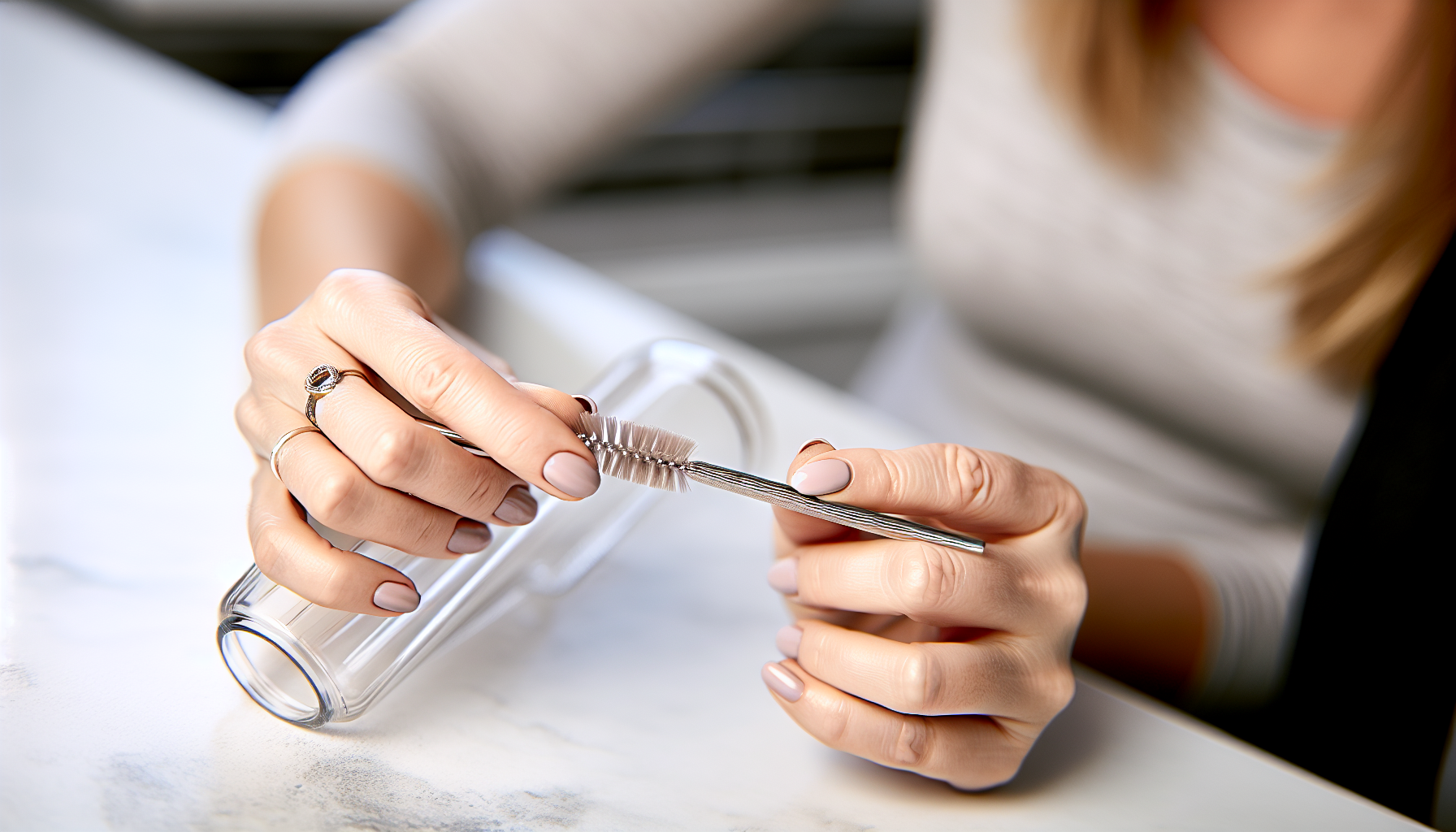
Proper cleaning and maintenance can prolong the life of your glass straws. They’re easy to keep clean thanks to their see-through design and smooth surface.
Dishwasher safe and simple to clean manually, glass straws require minimal effort to maintain. Regular cleaning helps ensure they’re safe to use and keeps them looking good as new.
Cleaning Techniques
Cleaning glass straws is a breeze. You can simply place them in the dishwasher or hand wash them with warm soapy water. For stubborn residue, a special cleaning brush can be used for a thorough clean.
Keep in mind, during cleaning, refrain from using severe cleaners and ensure they are thoroughly rinsed under warm, soapy water, squeezing the sides to eliminate any remnants.
Ensuring Hygiene
Hygiene is paramount when using reusable straws. With glass straws, it’s easy to ensure they’re germ-free, thanks to their transparent nature. A soak in distilled white vinegar can help get rid of any cloudiness from hard water.
Proper storage of your glass straws also contributes to maintaining hygiene. Store them in a cool, dry spot to prevent any damage and to keep them in good shape. Regular inspection for signs of wear and tear or damage is also crucial to ensure they’re safe to use.
Tips for Safely Using Glass Straws
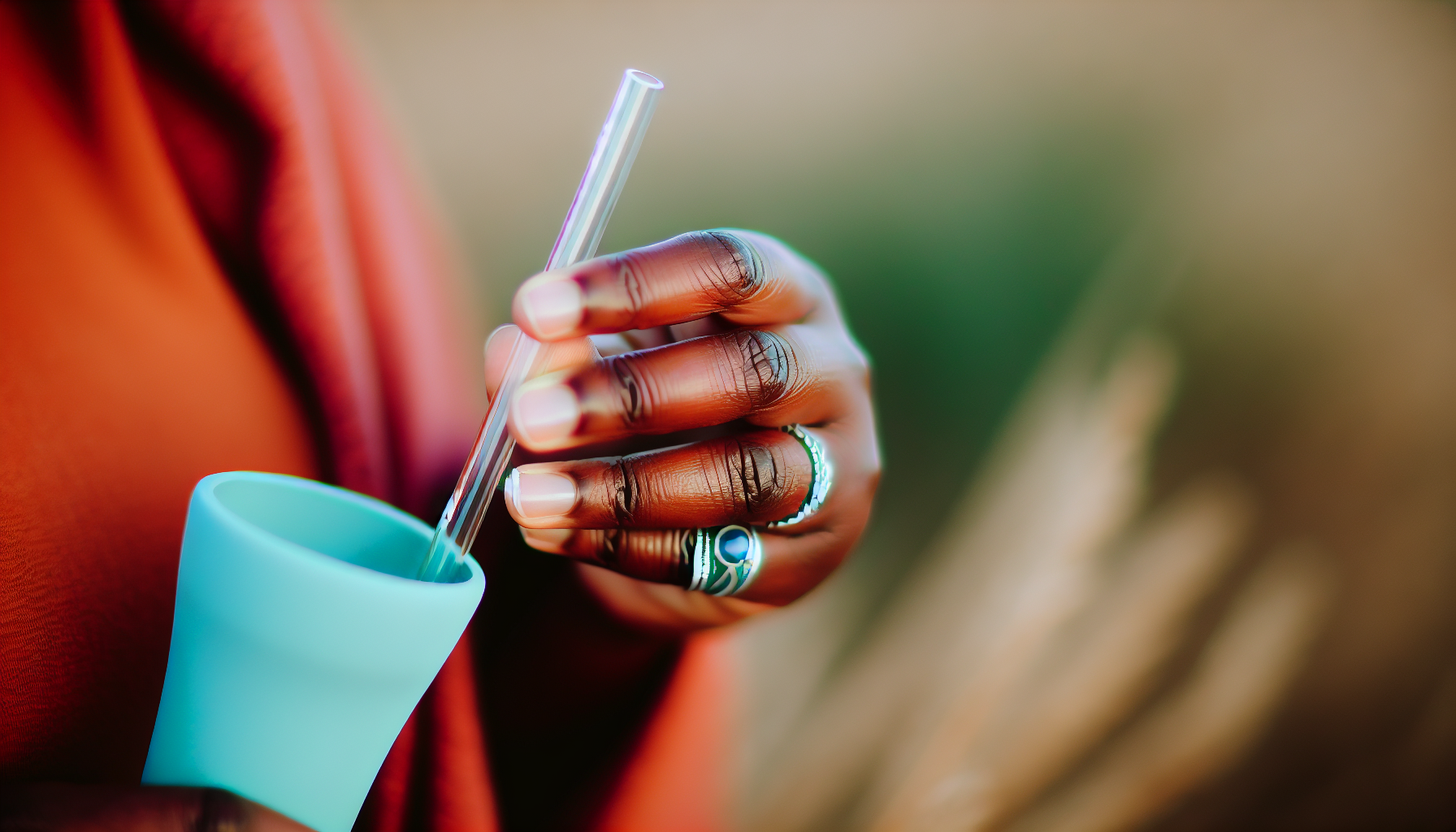
Safe use of glass straws necessitates some safety measures. Whether it’s handling hot and cold drinks or protecting your straws from damage, a little care can go a long way.
Handling Hot and Cold Drinks
Made of borosilicate glass, glass straws can handle temperatures below freezing and up to 1500 degrees Fahrenheit, making them suitable for both hot drinks and cold drinks.
Despite this, they won’t break due to swift temperature fluctuations, due to their resistance to thermal shock. So, whether you’re sipping on a steaming cup of coffee or a cold smoothie, glass straws can handle it all.
Protecting Your Glass Straws
Protecting your glass straws from damage is as important as cleaning them. Using a cloth pouch or a hard case can prevent scratches and protect against impacts during transport.
Avoid keeping glass straws near metal utensils or hard surfaces to prevent them from being knocked over or scratched. Remember, they’re just as delicate as any other glassware, so handle them with care.
Making an Informed Decision: Choosing the Right Reusable Straw for You
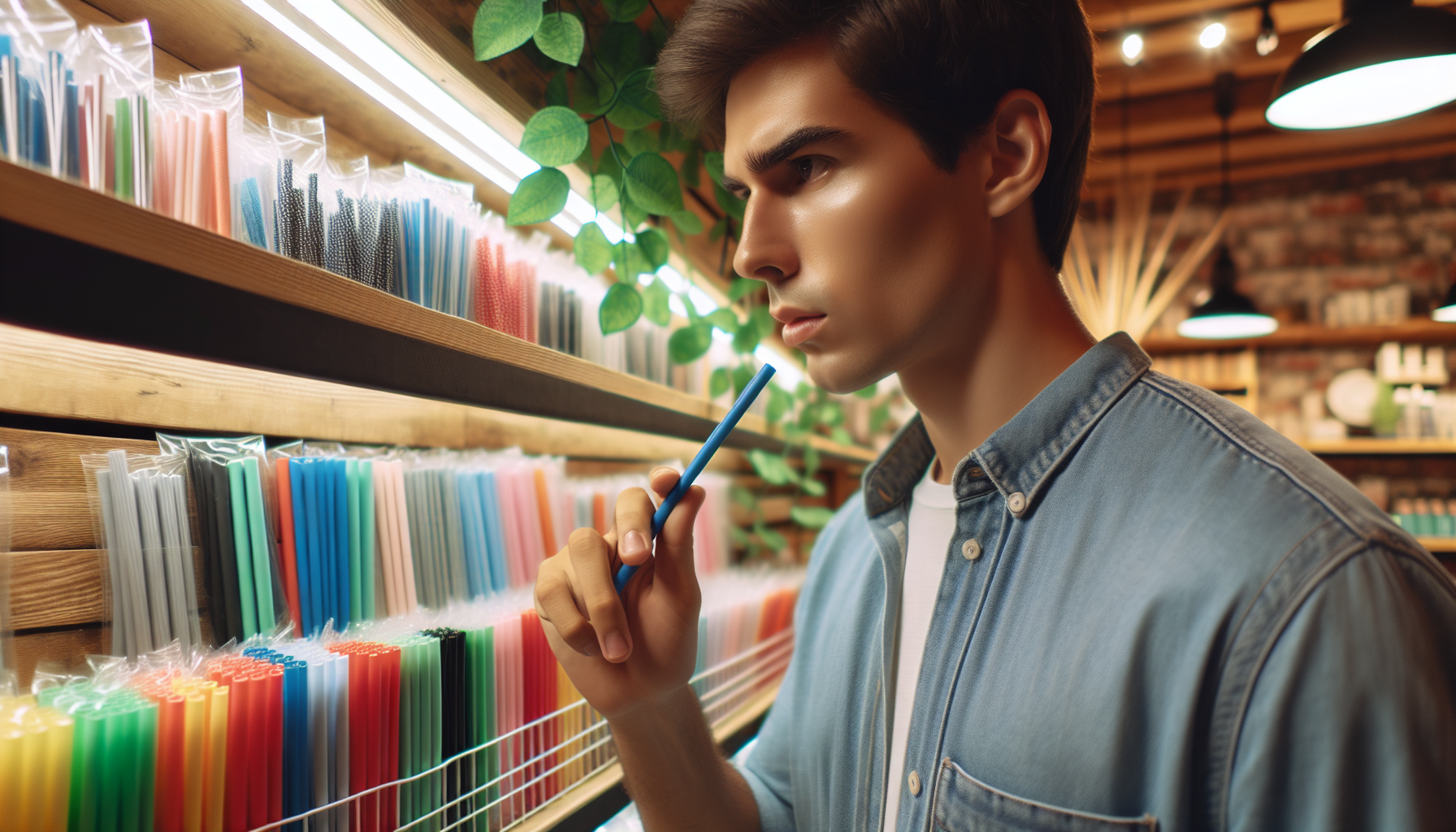
The selection of the appropriate reusable straw is a personal choice influenced by various factors. From the material and ease of cleaning to lifestyle and personal preferences, there’s much to consider.
Personal Preferences and Priorities
When choosing a reusable straw, take into account aspects like the material’s resilience, the cleaning process of the straw, and your personal preference for the straw’s texture and taste.
For instance, if you prioritize durability and ease of cleaning, stainless steel straws might be your best bet. If you prefer a straw that’s soft to the touch, silicone straws may be the way to go.
Finding the Perfect Fit
The quest for the ideal straw involves considering aspects like its size, material, and design. Whether you prefer a small, thin straw for sipping cocktails or a large, thick one for smoothies, there’s a reusable straw out there to fit your needs.
Consider your lifestyle as well. If you frequently travel or enjoy outdoor activities, a collapsible metal or silicone straw may be the most convenient option.
Summary
In conclusion, while glass straws have their disadvantages, they’re a stylish, eco-friendly alternative to single-use plastic straws. With proper care and maintenance, they can last for years, making them a cost-effective choice. Whether you choose glass, metal, bamboo, or silicone, the most important thing is that you’re taking a step towards reducing single-use plastic waste and making a positive impact on our environment.
Frequently Asked Questions
Are glass straws good or bad?
Glass straws are a good choice because they are non-toxic and won't leach chemicals into your drink like plastic straws do. They are also durable and look great, making them perfect for any occasion.
How easily do glass straws break?
Glass straws are very sturdy and will not easily break, even if they fall on a table or bench or if a person bites them with their teeth. So you can feel confident using them without worrying about breakage.
What is the healthiest straw to use?
The healthiest straw to use is a silicone straw because it is safe for the earth, kids, teeth, and body, plus it is dishwasher safe and has a great mouth-feel. It also doesn't impart any taste to your drink and doesn't break.
What is the disadvantage of straws?
Using non-recyclable straws leads to environmental pollution and contributes to long-lasting litter on the streets and in natural waterways.
How durable are glass straws?
Glass straws can last over two years if handled properly, despite being fragile and prone to breaking. So, with careful use, they can be quite durable.
You Might Also Like...
